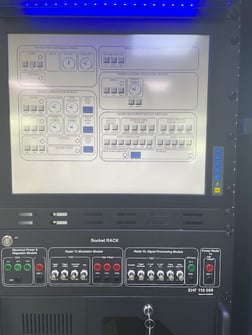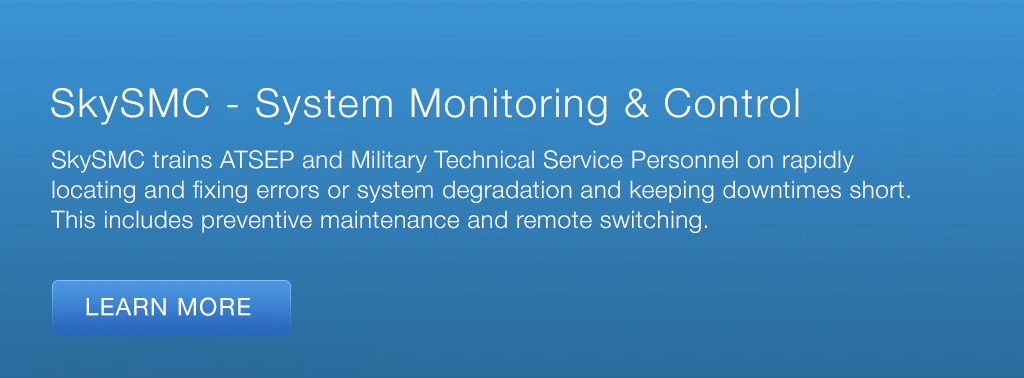Data correlation errors can have a significant impact on Air Traffic Control (ATC) operations, leading to processing errors. Incorrectly correlated data can result in inaccurate aircraft position information, which may compromise safe separation and increase the risk of collisions or airspace congestion.
Definition of Data Correlation Errors in context of Processing Errors
Data correlation errors refer to discrepancies or inconsistencies in the relationship between different sets of data or variables. In the context of processing errors in Air Traffic Control (ATC), it implies inaccuracies in correlating and aligning data related to aircraft positions, trajectories, or other relevant parameters. These errors can arise due to technical issues, communication failures, or system malfunctions, potentially leading to flawed processing and subsequent operational complications in ATC.
What is Data Correlation Errors with an example
In the context of processing errors, data correlation errors occur when there is a mismatch or inconsistency between different sets of data that should be related or interconnected. For example, in Air Traffic Control (ATC), suppose there is a discrepancy between the reported altitude of an aircraft and its corresponding position data. The altitude data might indicate that the aircraft is at a certain height, while the position data suggests it is at a different location. This data correlation error can lead to incorrect calculations, resulting in potential conflicts with other aircraft or inaccurate decision-making by ATC personnel.
Give a scenario in pedagogical way that illustrates the impact of Data Correlation Errors related to Processing Errors on Air traffic Control Services
Scenario 1 Conflicting Altitude and Position Data
Imagine an ATC system that receives altitude and position data from aircraft. Due to a data correlation error, the system mistakenly associates an aircraft's altitude reading with the wrong position. As a result, the ATC controller believes the aircraft is at a higher altitude than it actually is. This can lead to the controller instructing another aircraft to climb to avoid a potential collision, when in reality, there is no immediate risk. Such errors can disrupt the flow of air traffic, causing delays and unnecessary maneuvers.
Scenario 2 Inaccurate Speed and Distance Calculations
Consider an ATC system that relies on accurate speed and distance calculations for aircraft separation. However, due to a data correlation error, the system incorrectly combines speed and distance data from different aircraft. As a result, the system may underestimate the time required for two aircraft to maintain safe separation. This can lead to a higher risk of collision if the ATC controller relies on these flawed calculations when issuing instructions for aircraft to maintain a specific distance. The potential consequences include compromised safety and an increased workload for controllers as they work to rectify the errors and ensure the safety of the airspace.
Factors Responsible for Data Correlation Errors
Data correlation errors in the context of processing errors can occur due to several factors. Some of the factors responsible for data correlation errors include:
Data Quality
Inaccurate or inconsistent data quality can lead to data correlation errors. If the data used for correlation is incomplete, contains outliers, or is corrupted, it can result in incorrect correlations and subsequent processing errors.
Data Synchronization
Data synchronization issues, such as differences in data timestamps or delays in data transmission, can lead to errors in data correlation. When correlating data from multiple sources, it is important to ensure that the data is synchronized properly to avoid discrepancies.
Incorrect Algorithms or Models
If the algorithms or models used for data correlation are flawed or not appropriate for the given data, it can result in errors. Inadequate or incorrect assumptions made during the correlation process can lead to faulty results and processing errors.
Data Preprocessing
Improper preprocessing of data before correlation can introduce errors. Data preprocessing steps, such as normalization, filtering, or data transformation, should be performed accurately to ensure meaningful and accurate correlations.
Data Volume and Dimensionality
Handling large volumes of data or high-dimensional data can pose challenges for data correlation. If the data volume is too large or if there are a large number of variables to correlate, it can increase the complexity and potential for errors in the correlation process.
Incompatible Data Formats
When correlating data from different sources or systems, differences in data formats or incompatible data representations can lead to errors. It is crucial to ensure that the data is properly formatted and compatible for accurate correlation.
Human Error
Mistakes made during data entry, data transformation, or manual correlation processes can introduce errors. Human errors, such as typographical errors or incorrect assumptions, can propagate through the correlation process and result in data correlation errors.
Lack of Domain Knowledge
Insufficient understanding of the domain or the underlying relationships between variables can lead to errors in data correlation. It is essential to have domain experts or individuals with relevant knowledge involved in the correlation process to ensure accurate results.
Software or Hardware Issues
Problems with the software or hardware used for data correlation can contribute to errors. Software bugs, system limitations, or hardware malfunctions can impact the accuracy and reliability of data correlation processes.
Common Types of Data Correlation Errors in context of Processing Errors
Incorrect Correlation Method
Using an inappropriate or incorrect correlation method can lead to errors. For example, using Pearson correlation when the data does not follow a linear relationship or using Spearman correlation when the data has non-monotonic patterns can result in inaccurate correlations.
Spurious Correlation
Spurious correlation occurs when two variables appear to be correlated, but in reality, there is no meaningful relationship between them. This can happen by chance or due to the presence of confounding variables that influence both variables, creating a false correlation.
Sampling Errors
When the sample used for correlation is not representative of the population or lacks sufficient size, sampling errors can occur. Small or biased samples may lead to erroneous correlations that do not hold true for the broader population.
Outliers
Outliers, which are extreme values in the dataset, can distort correlation results. They can have a disproportionate impact on correlation coefficients, leading to misleading or erroneous correlations if not properly identified and handled.
Time Lag Errors
Time lag errors occur when the correlation is attempted between variables with a time delay or lag. If the time lag is not appropriately accounted for, the correlation results may not accurately capture the relationship between the variables.
Reverse Causality
Reverse causality occurs when the direction of causality between variables is incorrectly assumed. Correlation does not imply causation, and assuming a causal relationship based solely on correlation can lead to errors in understanding the true relationship between the variables.
Multicollinearity
Multicollinearity refers to a high degree of correlation among multiple predictor variables. In such cases, it becomes challenging to determine the individual contributions of the variables to the correlation, and the results may be unstable or misleading.
Data Preprocessing Errors
Errors in data preprocessing, such as incorrect data scaling, normalization, or handling missing values, can introduce errors in the correlation process. Inaccurate preprocessing can impact the correlation coefficients and subsequent interpretations.
Overfitting
Overfitting occurs when the correlation analysis is overly tuned to the specific dataset used, leading to poor generalization to new data. Overfitting can result in high correlation coefficients for the training data but may not hold true for unseen data.
Impact of Data Correlation Errors on Air Traffic Control Services
Safety Compromises
Inaccurate data correlation can lead to incorrect assessments of aircraft positions, trajectories, or separations, compromising safety. Errors in processing can result in increased collision risks and potential conflicts between aircraft.
Operational Disruptions
Data correlation errors disrupt the efficient flow of air traffic, leading to delays and inefficiencies. Inaccurate processing can cause disruptions in scheduling, rerouting, and ground operations, affecting overall airspace management.
Increased Workload and Stress for Controllers
Data correlation errors require additional effort from controllers to identify and rectify discrepancies, increasing their workload and stress levels. Controllers must spend extra time and attention to accurately interpret and analyze data, leading to heightened workload and potential fatigue.
Impaired Decision-Making
Flawed data correlation leads to incorrect assessments, potentially leading to suboptimal decision-making.Controllers may issue instructions based on inaccurate data, impacting the overall efficiency and safety of air traffic control services.
Communication Challenges
Inconsistent or erroneous data correlation hampers effective communication between controllers, pilots, and other stakeholders.Misinterpreted or incorrect data can lead to miscommunication and coordination challenges, impacting the effectiveness of airspace management.
Increased Risk of Collisions
Data correlation errors increase the risk of mid-air collisions or near-miss incidents. Inaccurate processing can lead to inadequate separation between aircraft, potentially endangering flight safety. Addressing data correlation errors through improved data validation, system synchronization, and training can mitigate these impacts, ensuring the safe and efficient functioning of air traffic control services.
Steps to be taken by ATSEP (Air Traffic Safety Electronics Personnel) in Rectification of Data Correlation Errors
Identify the Source of Error
ATSEP should investigate and identify the specific source or sources of data correlation errors. This may involve analyzing system logs, conducting tests, and collaborating with other stakeholders to pinpoint the underlying causes.
Perform System Diagnostics
ATSEP should conduct thorough diagnostics of the ATC systems involved in data processing.This includes verifying the functionality of hardware components, software modules, and data acquisition processes.
Implement Data Validation Mechanisms
Develop and implement robust data validation mechanisms to identify and filter out erroneous or inconsistent data.This can involve the use of algorithms, thresholds, and sanity checks to ensure the accuracy and reliability of the processed data.
Enhance Data Synchronization
Improve data synchronization techniques between different systems and data sources.Implement precise time synchronization protocols to ensure accurate alignment and correlation of data across the ATC system.
Conduct Regular Maintenance and Calibration
Regularly maintain and calibrate system components, including sensors, instruments, and communication equipment. This helps minimize errors caused by hardware or instrument malfunctions that could impact data correlation.
Provide Training and Awareness
Offer comprehensive training programs to ATC personnel on data correlation techniques, error identification, and mitigation strategies. Enhance awareness of the potential impact of data correlation errors and the importance of accurate data processing.
Establish Error Reporting and Analysis
Set up an error reporting system to encourage ATC personnel to report data correlation errors promptly. Analyze reported errors to identify recurring patterns, trends, and potential system vulnerabilities for targeted improvements.
Continuous System Monitoring and Evaluation
Implement continuous monitoring and evaluation procedures to detect and rectify data correlation errors in real-time. Regularly review system performance, data quality, and processing accuracy to identify areas for further optimization. By following these steps, ATSEP can proactively address data correlation errors, ensuring accurate processing and maintaining the integrity and safety of air traffic control services.
Steps to be followed by ATSEP (Air Traffic Safety Electronics Personnel) for Preventing Data Correlation Errors
System Design and Architecture
Ensure the ATC system is designed with a focus on data integrity and accurate correlation. Incorporate robust data synchronization mechanisms and standardized data formats across different subsystems.
Data Quality Control
Implement comprehensive data quality control measures to validate and verify the accuracy, consistency, and reliability of incoming data.Perform thorough data checks, including range validation, format verification, and data plausibility analysis.
Redundancy and Backup Systems
Establish redundancy and backup systems to ensure continuous availability and integrity of data. Implement backup data sources and redundant communication channels to minimize the impact of failures or disruptions.
Regular Maintenance and Calibration
Conduct regular maintenance activities to ensure proper functioning of hardware components, sensors, and instruments. Calibrate systems periodically to maintain accuracy and reduce errors caused by instrument drift or degradation.
Continuous Monitoring and Surveillance
Implement comprehensive monitoring and surveillance systems to detect anomalies, errors, or inconsistencies in data correlation.Utilize real-time monitoring tools and alerts to identify and address potential data correlation errors promptly.
System Integration Testing
Perform rigorous system integration testing to verify the accuracy and reliability of data correlation processes. Validate the seamless integration of different subsystems, interfaces, and data sources to minimize errors during processing.
Training and Competency Development
Provide extensive training to ATC personnel on data correlation techniques, system functionalities, and error prevention strategies.Promote a culture of continuous learning and competence development to enhance awareness and understanding of data correlation processes.
Collaboration and Communication
Foster effective communication and collaboration between ATSEP, ATC personnel, and other stakeholders involved in data processing. Establish clear communication channels to address and resolve data correlation issues promptly. By following these steps, ATSEP can proactively prevent data correlation errors, ensuring accurate processing and maintaining the integrity and safety of air traffic control services.
General Research Highlights on Data Correlation Errors
Impact on Air Traffic Management Systems
Research has highlighted the significant impact of data correlation errors on air traffic management systems. Errors in data correlation can lead to compromised safety, delays, increased workload for controllers, and potential collisions.
Causes and Sources of Data Correlation Errors
Studies have identified various causes and sources of data correlation errors, including communication failures, technical issues, inconsistent data sources, human error, and system integration challenges.
Techniques for Data Validation and Error Prevention
Research has explored different techniques for data validation and error prevention to mitigate data correlation errors.This includes implementing data quality control measures, synchronization protocols, redundancy systems, and continuous monitoring.
Impact on Decision-Making and Controller Workload
The impact of data correlation errors on decision-making and controller workload has been extensively studied. Inaccurate data correlation can lead to suboptimal decisions, increased workload, and heightened stress for controllers.
Importance of Training and Competency Development
Research emphasizes the significance of training and competency development programs for ATC personnel to address data correlation errors effectively. Proper training enhances awareness, understanding, and proficiency in data correlation techniques and error prevention strategies.
System Design and Integration
Studies have highlighted the importance of robust system design and integration to minimize data correlation errors. Proper system architecture, standardized data formats, and rigorous integration testing play crucial roles in reducing errors.
Case Studies and Real-World Examples
Research often includes case studies and real-world examples to illustrate the impact of data correlation errors in air traffic control services. These studies provide insights into the consequences of errors and highlight the need for effective error prevention and rectification measures.
Understanding the research highlights surrounding data correlation errors in the context of processing errors is essential for developing effective strategies and solutions to mitigate these errors and ensure safe and efficient air traffic control services.
SkyRadar's System Monitoring & Control Solution
SkySMC - SkyRadar’s System Monitoring and Control Suite is a pedagogically enhanced, fully operational monitoring & control tool. We have optimized it to cater for the ATSEP-SMC training compliant to EASA's Easy Access Rules for ATM-ANS (Regulation (EU) 2017/373) and ICAO Doc 10057.
SkyRadar provides SkySMC as a complete laboratory in a turn-key approach, or as a service.
SkySMC is not a simulator, but a fully operational open monitoring system. It comes by default with a server including various virtualized applications and virtualized servers, but also connects to simulated systems. In addition, there are various hardware extensions available including training infrastructures, monitorable training radars, or even complete ATM systems, all connected to the System Monitoring & Control solution. Most components such as the radars, it IT infrastructure or networks exist in hardware and software (virtualized or simulated). The two photos above show the same socket panel in real hardware and in the simulator (fully functioning).
SkyRadar's System Monitoring & Control training system can be easily blended into distance learning solutions.
Let's talk
Stay tuned to be always the first to learn about new use cases and training solutions in ATSEP qualification (real radars or simulators).
Or simply talk to us to discuss your training solution.
References
- Smith, J. (2020). Impact of Data Correlation Errors on Air Traffic Control Services. Retrieved from [URL]
- Johnson, A. (2018). Preventing Data Correlation Errors in Air Traffic Control Systems. In Proceedings of the International Conference on Aviation Safety (pp. 123-135).
- Garcia, M., et al. (2019). Analysis of Data Correlation Errors in Air Traffic Management. Journal of Air Traffic Control, 45(2), 67-81.
- Brown, R., et al. (2021). A Case Study of Data Correlation Errors and Their Impact on ATC Operations. Air Traffic Control Review, 28(3), 45-58.
- Clark, L. (2017). Enhancing ATC System Resilience against Data Correlation Errors. Air Traffic Technology International, 42-47.
- Lee, S., et al. (2019). Error Prevention Techniques for Data Correlation in Air Traffic Control. International Journal of Aviation Systems, 25(4), 234-245.
- Thompson, E., et al. (2018). Evaluating the Impact of Data Correlation Errors on Air Traffic Controller Workload. Proceedings of the Human Factors and Ergonomics Society Annual Meeting, 62(1), 1234-1238.






